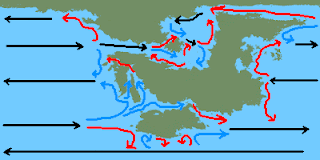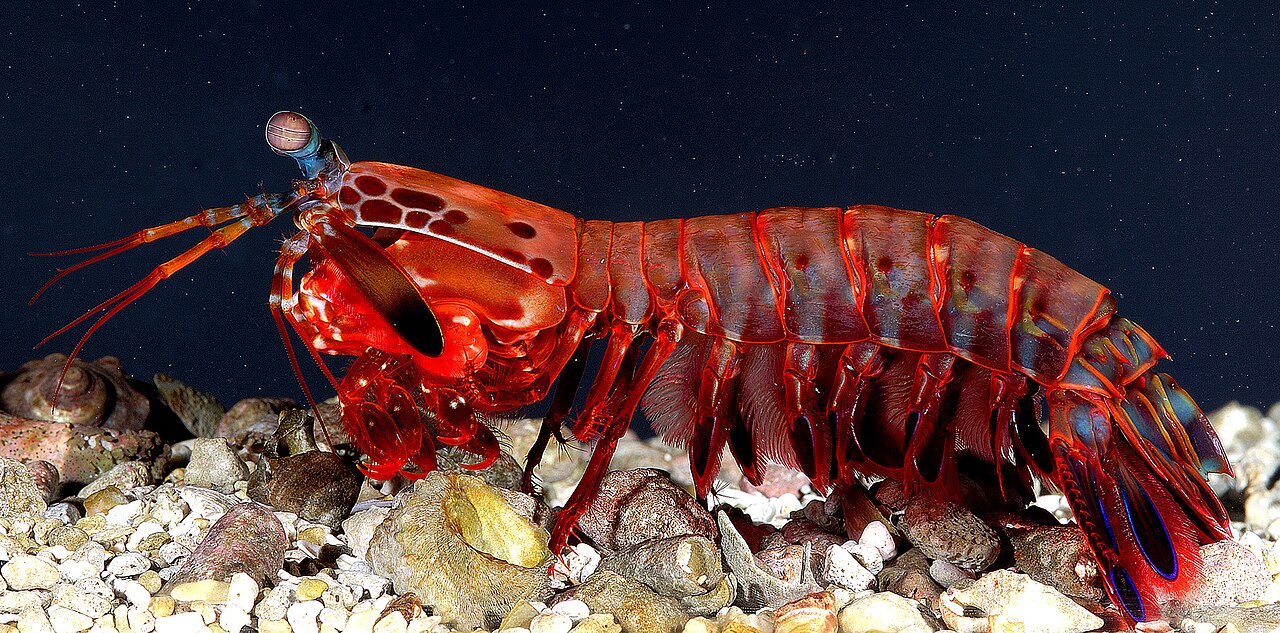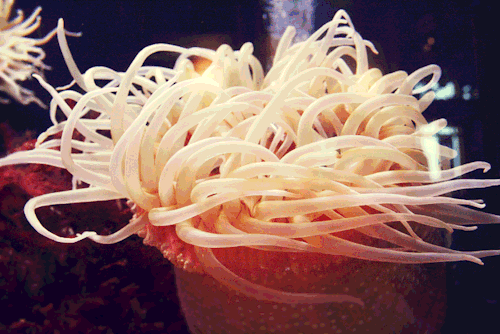30 November, 2021
02 October, 2020
PLANETARY MODEL | PART 8 | A MORE DETAILED APPROACH TO PLATE TECTONICS - II
Let's first look at what we DO know about the terrestrial planets - with the exception on Earth - all planet's Iron Oxide x Iron Sulfide content seems to follow a power law:
FeO ratio ~ 1,75 * 0,9^(core/planet mass ratio)
And the further you are from the Sun, the more iron oxides you're likely find - the Earth and the Moon are an special case, being outliers to the trend much probably to the Theia Collision event, a planet with different make-up would have mashed against Earth and changed it's composition ever so slightly - giving it a bigger core with more iron oxides.
The default density of Paart as of our Planet Classification Guide points out - would be of 3,06 g/cm³ up to 3,39 g/cm³, Paart is already slightly so heavy with 3,8 g/cm³, a thing we can explain with the Taaf event of birth, when two protoplanets did collide nearby, and Paart accreted their material, mainly metals, accounting for 5% of the planet's current mass (or about 0,04 Me), what did not accrete or was ejected, accreted into the moon Taaf.
The core ratio of a planet in the terrestrial planets seems to follow:
C ratio = 0,28^(AU) * star mass
In a way that,
FeO ratio ~ 1,75 * 0,9^(100 * (star mass * 0,28^(AU)))
We get Paart would have a core that's at least 19% Paart's mass and 26% at most - and iron oxide levels comparable to that of Mars, about 15,7% or twice as Earth's.
Earth's core is about 32,5% of the planet's mass for perspective, the inner core is smaller at about 1,6% of the planet's mass.
Paart's inner core about 1/60th that of it's mass as well, we may have an inner core that's 1274km in radius. While it's outer core would be 3185,5km in radius, with respective densities of 11,47g/cm³ and 9,85g/cm³.
So what do we have? Composition, highlighted green and red what Paart has more or less than Earth.
O 38%; Si 20% ; Bi 14%; Al 9%; Fe 8%; Ti 5%; Ca 3%;
2% K, 0,5% Zn, Na, Mg and other trace elements ~0,5%.
Earth is 46% Oxygen, ~28% silicon, 8% aluminum and 5% iron, mainly. Paart seems to be actually more dense than Earth, for some reason I didn't pay any attention to that.
The composition alone of the elements of Paart sum to a density of about 3,56g/cm³, which is laughable, but remember, we have switched some of the oxygen by bismuth metal, which when combined with sulfur, creates bismuthinite, which has a density of ~7g/cm³.
While on Earth much of it's interior is made of Olivine, which takes up Magnesium and Iron, both less dense than bismuth, but magnesium is rarer on Paart, so we are left with Iron-olivine, and bismuth silicates such as Sillénite, which is monstrously dense with 9,2g/cm³. The most common mineral in the mantle would be bismite, with a density of 8,9g/cm³, along with some small amounts of bismuth and iron sulfides (6,78g/cm³ and 4,84g/cm³).
For the mantle, we have 37% SiO2, 28,7% Fe2SiO4, 15,7% FeO, 5% Bi2O3, 4,5% Al2O3, 2,8% CaO, 2% Bi12SiO20, 2% TiO, 1% Bi2S3, 0,5% FeS, 0,5% ZnS, and 0,3% NiO - with a density of 4,28g/cm³.
The overall density of the planet would then go up to 5,55g/cm³, so...
Correcting for Mass, we would go from 0,798, to 1,167 Earth masses - or for Diameter, from 13.450km to 11.786km. In the first we have a gravity of 10,37m/s², while in the later we have a gravity of 9,14m/s².
FUTURE of PROJECT PAART
The crew has decided to make it smaller - there is three main consequences to that:
- The Earth-like gravity suggests creatures would be under Earth-like biomechanical constraints, ie, have similar sized animals for certain roles, of course - that depends a lot on other factors too, but it is a big one.
- The Earth-like gravity also implies a greater atmospheric pressure, initially 2,29atm - now, 2,94atm, that can mess a bit with animal respiration.
- The increased atmospheric pressure does increase the temperatures too, from initially 18,5°C to 30,8°C - which ends up being optimal for bacterial growth, particularly cyanobacteria as we know it.
Compared to the terrestrial planets, Paart's structures looks like this:
- M.O. Valent, 02/10/2020
17 May, 2020
A BRIEF HISTORY OF PAART | SO FAR...
There are 5 planets in the Vol system, Veek, Hool, Paart, Seey, and Lahaart - plus, 1 T-class brown dwarf, Kaal, in the system's outskirts.
It's atmosphere is mainly composed of Nitrogen, Oxygen and Carbon Dioxide, with trace quantities of Methane, Sulfur Dioxide, and Ammonia vapor.
HISTORY TIMELINE
10 May, 2020
FROM FISH TO SALAMANDER | A CLADISTICS EXERCISE | PART 1
(A JOURNEY TO THE LAND REALM)
"[...] this blog is a way to publish my creations, I hope this is also a way to inspire other science fiction writers to better build their worlds, I already carry some content about it for the last 5 years and I hope to provide enough starting material for your creations." - M. O. Valent, 18/02/2019
I also went as far as to designing some of it's anatomy:
Under the simplistic assumption that things would go similar to Earth's, I reached far into the late Cambrian aaaaaand... I killed Pikaia, or what would later evolve to become it's equivalent on Paart.
And the story goes as follows with this cladogram:
02 May, 2020
PAART | MESOCAMBRIAN | CAMBRIAN | PART 2
Before we get to build our bestiary full of weird ancient creatures, we must recap what happened so far in this world's history.
Here we see the last genus of Albazoa die out - with the further breaking of cold oceanic currents, while the more versatile and complex Metazoans thrive in the calm and warm waters left after the last hypercane dissipated...
At the time Sthalika split, Paart's crust was divided in 8 plates, 2 of which were entirely under the Pannotic Ocean, half the mountain ranges from the formation of Sthalika eroded away with the severe Proterozoic weather, the water - previously locked in the Great Northern Ice Cap flooded plains the size of countries creating the Northern Sea and the Voreal Sea, some lakes later joined to ocean to form a complex of mineral rich Mediterranean-like seas as the continents drifted away from each other (Each currently named after what it looks like, because other than that there is currently no great features to call them by).
As said before, the disruption of equatorial and southern oceanic currents crowned the extinction of Albazoa, the so called Pannotic Ocean now formed a Pacific-like system of currents, creating a water hemisphere with occasionally heavy tropical storms, part of why over time, the eastern part of Piscia is getting eroded away.
The high density of nutrients and minerals of the water coming off the new seas aided the formation of hard structures like shells, teeth and carapaces, giving rise to what could be classified as arthropods and mollusks mainly.
However, you can follow the discussion here
We hope to see you soon!
[Cambrian Fauna]
coming soon!
27 April, 2020
PLAN CHANGE ON THE FLY
25 April, 2020
BIOLOGY | PART 7 | ANIMAL VISION
"Because the pit receives direct input from the somatosensory, rather than the visual system, it seems likely that infrared signals are detected through a thermotransduction, rather than phototransduction mechanism."
"Our results demonstrate that the pit membrane serves as a passive antenna for radiant heat, transducing thermal energy to heat-sensitive channels on embedded nerve fibers." - [source]
Other than a few narrow specific bands of infrared, and the infrared window (which is a great stretch), the other viable bands of light to explore in vision are Visible light and UV-A.
A.K.A. the Mantis Shrimp, it is a well known animal for it's supposedly 'super vision', lots of popular sites and YouTube channels would have you to believe it can dwarf human perception of color, after all, the animal does have 12 types of cones, however, a study published in the Science vol.343 (also shared by Nature) showed that Tamarutacas trained to associate food with color (pick the right color and you gain food thing) just can't distinguish between colors 25~12nm apart, which may sound like a nitpick stretch, except when we remember humans can tell colors up to 5~1nm apart. It turns out that the amount of cone receptors compensate for the lack of post processing capability of the shrimp's brain, and thus providing the animal with extra time to think on it's next move.
Is the theory that tries to justify the Cambrian Explosion - even though by the day I'm writing this, is still debated whether it was really a diversification boom as we depict, or if it just happens that there wasn't good conditions for fossilization of those animals for a long time, when these conditions came, it gives us the impression that life diversity suddenly skyrocketed in a period of a couple million years - still, considering there was indeed a boom in life diversity, how did it happen?
What we know about life evolution tells us that somehow the environment of the creatures changed in a way that favored a certain group of strategies, this change can be sudden (in geological terms) or gradual like natural climate change - like, how mammal diversity suddenly seem to boom after the KT event. In this case, the Light Switch theory suggests that atmospheric changes in composition allowed over time that more light could reach Earth's surface, and with such, animal life started to use this light to it's advantage, developing simple eyes, and with the advent of more complex eyes, predation, and mating took off as easier, and these new environmental pressure was the fuse to the ~~Caaaaambrian Explosion~~
However, what the Light Switch theory seemingly fails to explain, or at least, agree to - is in what time window would this have happened, as the Cambrian explosion seems to be offset in a few million years from the advent of eyes.
"The rate of eye evolution is difficult to estimate, because the fossil record, particularly of the lower Cambrian, is poor. How fast a circular patch of photoreceptor cells can evolve into a fully functional vertebrate eye has been estimated based on rates of mutation, relative advantage to the organism, and natural selection. However, the time needed for each state was consistently overestimated and the generation time was set to one year, which is common in small animals. Even with these pessimistic values, the vertebrate eye would still evolve from a patch of photoreceptor cells in less than 364,000 years." [Wiki]Vision was around since the Late Ediacaran, and there is
On my original post about vision, I stated that animals like Lisa could make use of a special rod with a bismuth compound, which reaction with UV light would make re-emit light in the range detectable to the animal's cones (pretty much a fluorescent photo-multiplier), however, given the research I did for this post, I've found no such chemical that not only wouldn't be toxic or too reactive for this purpose, such as retinal tends to be, still, this task could still be performed not by a rod or cone cell, but by a tapetum lucidum in the back of the animal's eye, by synthesizing hard bismuth compounds in the form of small crystals reflecting light, like a chameleon's guanine crystals, using such a crystal like K3Bi2I9 (a type of perovskite) which happens to also be a photovoltaic material with high absorption to wavelengths less than 600nm and UV-A, peaking within the 440~520nm band, which includes Vol' peak emission at 493nm.
- M.O. Valent, updated in 30/04/2020
14 April, 2020
PAART | PALEOCAMBRIAN | CAMBRIAN | PART 1
The end of the Neopyrgian period had set an evolutionary arms race - on one side, the pioneering Albazoans, masters of the seafloor, soft-bodied creatures that enjoyed life under the cloud cover of that cold and stormy world Paart was. On the flip-si46de, Metazoans, bottom feeders, living from the organic leftovers adrift in the sea, crawling between vile germs and decaying matter, decomposing it... For millions of years, the status quo of nature were Albazoans populating fields the size of entire continents, while Metazoans were practically exiled into the shallower regions, where the waters were simply too violent for the simple life-style Albazoans had.
The anemones and chalimorphs didn't hated each other, they didn't think one was better than the other, they didn't even acknowledged each other's existence, even after all this time, they both have been fighting the same enemy, in the dark, with the tools they had available - against Time.
The ever lasting titan, ghost of past Christmases, the herald of extinction - Time. And just as light had become once again abundant in this world, like prisoners in the solitary for years, when the day rose once again, upon the newborn shallow seas of Paart, the critters from both sides could tell, without a doubt, that the darkness was no more...
Nevertheless, they saw the world as it is, it's scary, it's lonely... Their ancestors had guided themselves with their hearts and simple nervous systems, they could no see the world in it's majesty, glory, and unrelenting force. The very force that wouldn't spare their lives - it will be a crime consummated long ago, left for whatever survives long enough, to dig around these lands, and see through time, the unwritten history of this newborn world...
KEY EVENTS IN THE PALEOCAMBRIAN (by category and approximate chronological order)
Appearance of:
- Animal size ranging between 1cm and 9cm
- Reef building animals (Sponges and Corals)
- Simple shelled animals (Mollusks, Brachiopods, and Clams)
- Plate tectonics allow the water to flow into the northern hemisphere
- Volcanic activity increase carbon dioxide in the atmosphere
- As the ice blocks absorption of gases by the soil, the atmosphere enters into a greenhouse process, allowing the polar ice to melt faster as the continents migrate southward
- Oxygen levels stabilize near the equilibrium point at 9%
- M.O. Valent, 14/04/2020
- M.O. Valent, updated in 15/04/2020
HIGHLIGHTS
SCIENCE&ARTWORK | BINARY STAR SUNDIAL | PART 1
IS IT POSSIBLE TO CONSTRUCT A BINARY STAR's SUNDIAL? WHY? So this last week I've been trying to work on my own sundial to settle up ...

-
The mother is desperately bashing the alien beast with a metal chair, her breaths coming in frantic gasps between guttural grunts and panick...
-
DESTROY ALL CREATURES, THEY CAN’T BE REGENERATED. “Destroy all creatures. They can’t be regenerated.” is in the text box of two of the most...





































